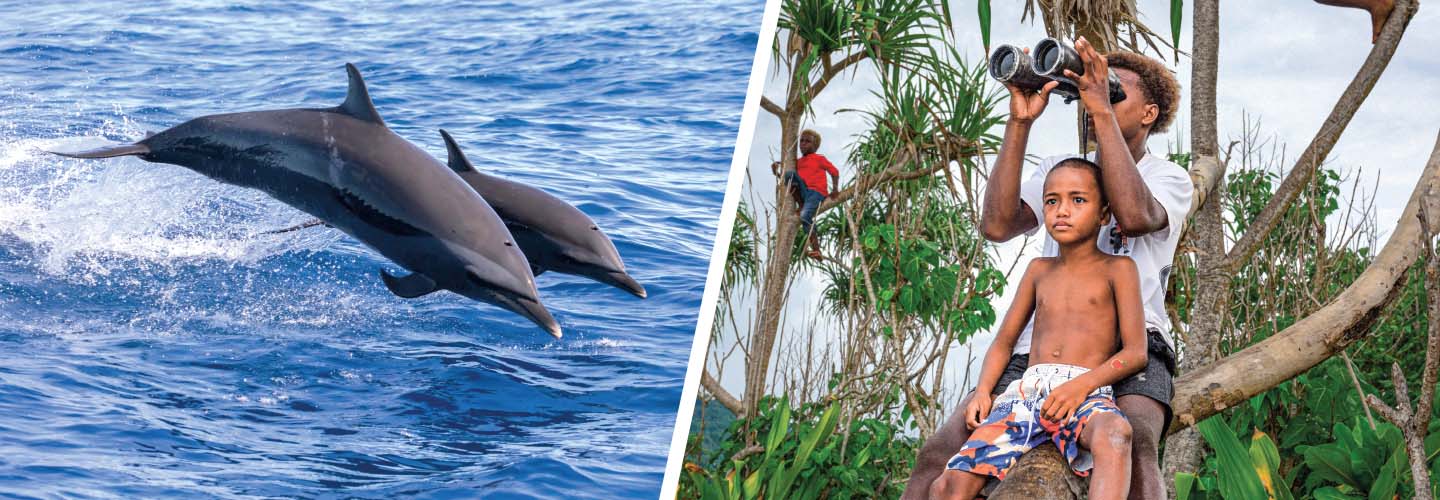Jim McMahon
The call of a conch shell roused the dolphin hunters from their beds. Under moonlight, the six men shuffled to the village church.
There a priest led them in a whispered prayer, his voice barely audible over the sound of crashing waves. It was high tide. Salt water pooled in parts of the village, which is on Fanalei Island, an ever-shrinking speck of land that’s part of the Solomon Islands in the South Pacific.
They paddled out in wooden canoes before first light, cutting through the darkness until they were miles from shore. After hours of scanning the horizon, one of the hunters, Lesley Fugui, saw a fin slice the glassy water. He raised a 10-foot-long bamboo pole with a piece of cloth tied to the end, alerting the others of his discovery. The hunt would begin.
These men are among the last dolphin hunters of the Solomon Islands. Some conservationists say slaughtering the marine mammals is cruel and unnecessary. But for the 130 or so residents of Fanalei, the traditional hunt has taken on renewed urgency in the face of climate change and rising sea levels. They say they need the dolphins for their lucrative teeth—which are used as local currency—to buy land on higher ground and escape their sinking home. Government research suggests that Fanalei, which is less than a square mile in size, could be underwater by the end of the century.
The dolphin hunters heard the call of a conch shell. They got up the from their beds. Under moonlight, the six men slowly walked to the village church.
There, a priest led them in a quiet prayer. They could barely hear his voice over the sound of crashing waves. It was high tide. The men live on Fanalei Island. It is part of the Solomon Islands in the South Pacific. The island is shrinking, and salt water pooled in parts of the village.
They paddled wooden canoes in the darkness until they were miles from shore. After hours of looking out at the horizon, one of the hunters, Lesley Fugui, saw a fin slice the glassy water. To alert the others, he raised a 10-foot-long bamboo pole with a piece of cloth tied to the end. The hunt began.
These men are among the last dolphin hunters of the Solomon Islands. Some conservationists say killing the marine mammals is cruel and unnecessary. But for the 130 or so residents of Fanalei, the traditional hunt is more important than ever because of climate change and rising sea levels. They say they need the dolphins for their lucrative teeth, which are used as local currency. And they need to buy land on higher ground to escape their sinking home. Government research suggests that Fanalei, which is less than a square mile in size, could be underwater by the end of the century.

